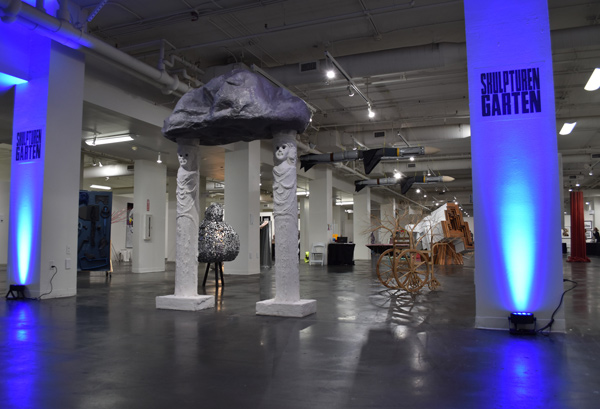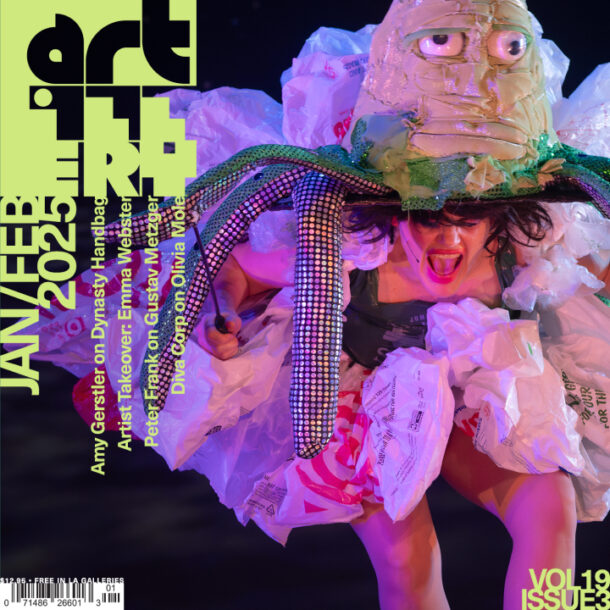“Over the last 10 years, rather surprising things have come to be called sculpture: narrow corridors with TV monitors at the ends; large photographs documenting country hikes; mirrors placed at strange angles in ordinary rooms; temporary lines cut into the floor of the desert. Nothing, it would seem, could possibly give to such a motley of effort the right to lay claim to whatever one might mean by a category of sculpture. Unless, that is, the category can be made to become almost infinitely malleable.”
Rosalind Krauss, Sculpture in the Expanded Field 1978
The simple query “what is the nature of sculpture?” has continued to challenge and intrigue artists since the watershed period from 1965 to 1975, which precipitated Krauss’ now classic essay.
That experimental epoch, during which emerged the developments now known as Post Minimalism, Earthworks and Installation Art, could be claimed as the last great breakthrough in sculpture. Works by artists from this period, such as those by Gordon Matta-Clark, who conceived of sculpture as the cutting of geometric shapes out of condemned buildings, Robert Smithson who conjoined the tropes of Minimalism to the landscape, and Michael Heizer’s “negative sculptures” that removed mass from sites both in and outside the gallery space, collectively represent the most radical break with the conventions of sculpture from that time to the present.
That this seminal period continues to hold sway can be seen in Skulpturengarten, a recent exhibition at Fabrik Art Fair, Los Angeles, curated by artist and Jaus Gallery director Ichiro Irie. The exhibition highlights a panoply of possibilities in sculpture, yet certain strategies and trends can be discerned, the most pervasive being a tendency toward the tradition of constructivism as a way of making sculpture—as opposed to the historical method of carving or modeling. When sculptors began to construct in the early 20th century, it was the single most important revolution in the history of sculpture. Artists broke away from the monolith to more fully utilize space and finally dispense with the figure. This method of making sculpture by joining cut planes and linear elements eventually became the dominant mode for contemporary sculptors because its directness and approach to process allows for improvisation and spontaneity.
The works exhibited in Skulpturengarten display traits from both of these generative periods in 20th century sculpture. But significantly, they add elements of conceptual narrative. The result is a new kind of sculpture that infuses the formal acrobatics of late Modernism with a Duchampian art “at the service of the mind.”

Rochelle Botello, Turn It Up (2018).
While most works in the exhibition don’t adhere to the mostly formal, non-objective imagery derived from Russian Constructivists Alexander Rodchenko and Vladimir Tatlin, echos of those sensibilities can be seen in the works of Abdul Mazid, Anibal Catalan, Kellan Barnebey King and Aili Schmeltz. Mazid’s construction of bright red powder-coated steel rods that appear held together by tension (El Corazon, 2017) exudes intensity through its explosive composition and line-like elements. Catalan’s construction of wood, acrylic panels, metal shelving and aluminum (Untitled Unit, 2018) playfully assembles geometric elements, recalling the sketchiness of early cubist collage and construction, while King’s honey comb-like structure (Las Puertas Azules [The Blue Doors], 2017) suggests crystallizing growth.

Kellan Barnebey King, Las Puertas Azules (The Blue Doors), 2017.
The open-form nature of these works contrasts with that of Schmeltz, whose large construction of wood, cardboard and tape (Crosscut, 2011) has much more significant mass than all of the previous artists combined, and alludes to the boxiness of late David Smith sculpture, as well as suggesting architectural references. Significantly, all of these artists have grafted a conceptual back story onto what are strongly formalist, abstract works; for example, King states that his work “recontextualizes objects and systems related to my perception of home.”
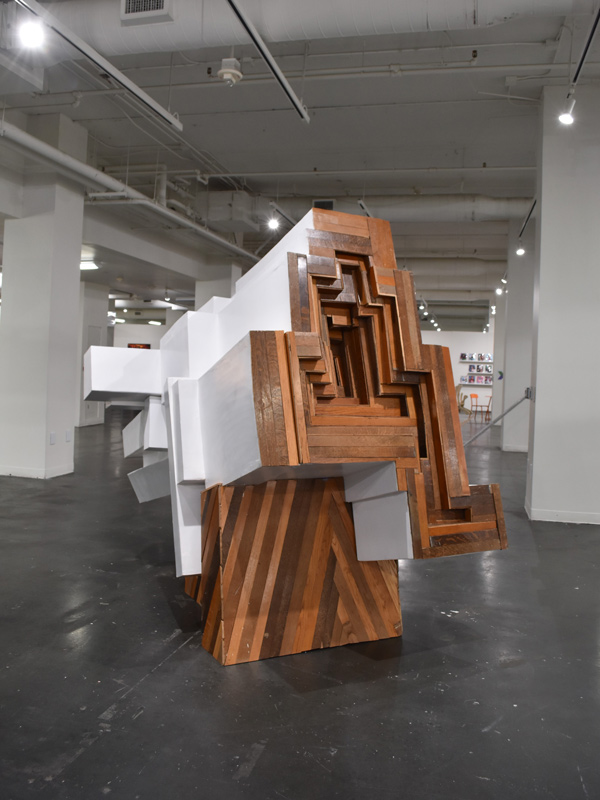
Aili Schmeltz, Cross Cut (2011).
Also employing constructivist technique, but in a very different way, is the large plywood work by Ephraim Puusemp (SEPULTURE/SCULPTURE V, 2018), one of the few works in the show that uses organic forms, but it in no way resembles the classic sculpture in that genre by Arp and Moore. Instead, the artist has enlarged the pieces of a child’s wooden dinosaur skeletal model and used them to create a work of formal complexity and beauty. Slotted and held together only by tension, the work holds one’s attention through inventive use of form. Likewise, another sculpture in unpainted wood by Pontus Willfors (Wheelchair, 2018) appeals through its curving, branch-like forms that seem to grow out of the unlikely motif of a wheelchair. The contrast between the disablement and a lack of mobility suggested by the wheelchair, and the growth-like quality of the branch forms produces an uncanny effect that can only be described as surreal. Like the work of Puusemp and most of the other artists in the show, it injects subtle content back into the abstract forms and processes of Post-Minimalism.

Sandra Mann, Tribute to Charles Eames (2016).
Another approach evinced in the exhibition is the use of photography in combination with sculpture. Photography played a key role in the work of Smithson, whose Incidents of Mirror-Travel in the Yucatan (1969) consists of a photographically documented series of mirror sculptures in the landscape. Matta-Clark also relied on photography and video since his architectural interventions were so ephemeral. The current interest in combining these media into a kind of hybrid can be traced back to these two artists. In Sandra Mann’s Tribute to Charles Eames (2016), she shows a series of foam core mounted photographs, slotted together into a rectilinear construction reminiscent of de Stijl sculptural works, yet the imagery of figures in a wooded setting generates intrigue, and the use of the photos in such a three-dimensional format produces spatial ambiguity as one walks around the work. Also combining sculpture and photography, Michelle Carla Handel’s Smoke, Mirrors, Neurons (2017) conjoins a panel of sculpted objects with an identically scaled photographic print of the same, bringing to mind the relationship between object and image. The combination of sculptural and photography appears to be fertile ground currently, with much room left for artists to explore. It is a subject that deserves more examination in future group exhibitions.

Michelle Carla Handel, Smoke, Mirrors, Neurons (2017).
A number of works merge the formal qualities of abstract sculpture with figurative references. Eric Vrymoed’s stop sign and pole (STOP, 2018) converts into a kind of linear zig-zag, reminiscent of various 1960s constructed abstract sculptures. Yet cast lead falcons perch along its length, injecting narrative into the dynamic form. Jeff Colson’s monumental column-like sculpture adverts back to classical Greek and Roman architecture (Draped Column, 2010). On close inspection, it reveals itself to be a shower curtain. Here, high and low are seamlessly combined in one sculpture, whose monolithic form recalls the Minimalist works of John McCracken. Felicitas von Lutzau’s curvilinear form represents a lake from which Echo, from the Greek myth, emerges (Untitled Sea- Echo, 2018). A blurred photograph representing the nymph has been applied to a mirror cut in the shape of a figure, giving it the appearance of an apparition.
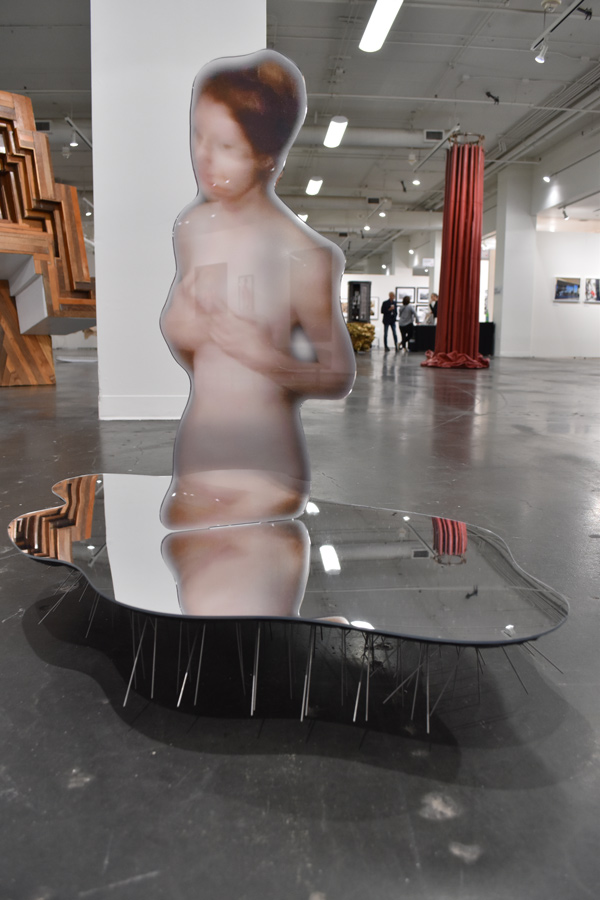
Felicitas von Lutzau, Untitled Sea- Echo (2018).
Other artists explore ways in which sculpture, the least spontaneous of the visual arts in Rodin’s time, can approach the looseness and casualness of a sketch. Martin Durazo’s Octagonal (2018) is a kind of collage in three dimensions, assembling found material such as beads, strings of lights and fabrics around an eight-sided object that could be a relic from the 1960s or 70s; the collected objects often reference various subcultures—one of the artist’s main interests. Similarly, Lauren Fejarang uses found material to assemble a construction (Sumthin Like Your Heavy HD , 2018) that recalls some of the work in the 1968 Robert Morris show, “9 at Leo Castelli.” The material connections include a roll of chain-link fencing, a slice of a column, and sheer pink fabric. The contrast of the materials and how they interact reflects the works’ alignment with the idea of faktura, an important concept in Russian Constructivism.

Left: Martin Durazo, Octagonal (2018). Right: Ephraim Puusemp, SEPULTURE/SCULPTURE V (2018).
The two artists in the exhibition who use the most overt realism, Ashley Hagen and Shusuke Ao, possess nearly opposite sensibilities. Hagen’s meticulously crafted model of a seven story, 19th century period brick building, with one side removed (I see myself in you, 2014-2016), reveals a house in its interior and a mysterious basement space. Recalling the uncanny juxtapositions of René Magritte, the intervention into the historical architecture also suggests a relation to Matta-Clark. Ao’s 2 missiles made of unlikely materials like synthetic leather, fabric and buttons (AIM-7 Sparrow, 2018), seem full of personal symbolism, relating back to the nuclear weapons dropped on Japan at the end of the Second World War. Text, rather than image, characterizes the work of Jason Manley, whose 2018 Snowman sculpture is composed of laser cut aluminum letters welded together to form the basic shape the sculpture suggests; the words are taken from a poem of the same subject.

Shusuke Ao, AIM-7 Sparrow (2018).
Rounding out this compendium of mostly impressive and often unwieldily scaled works are the abstract organic form sculptures of Macha Suzuki (Verdugo Mountains, 2016), whose cut-MDF canyon-like sculpture engages with abstract painting, and Rochelle Botello’s visually sumptuous surreal work that uses linear forms to draw in space (Turn It Up, 2018). Cara Chan creates a kind of gateway with two caryatids that support a cloud form, alluding to one of the most ancient architectural motifs (Caryatids with Grey Cloud, 2017). Lastly, Anaeis Ohanian created an entire installation (Objekthood: Kuá Hakké Springs National Park, Mammoth Springs, 2018) that suggests the dystopian future that surely awaits humankind as the effects of climate change become all too real.
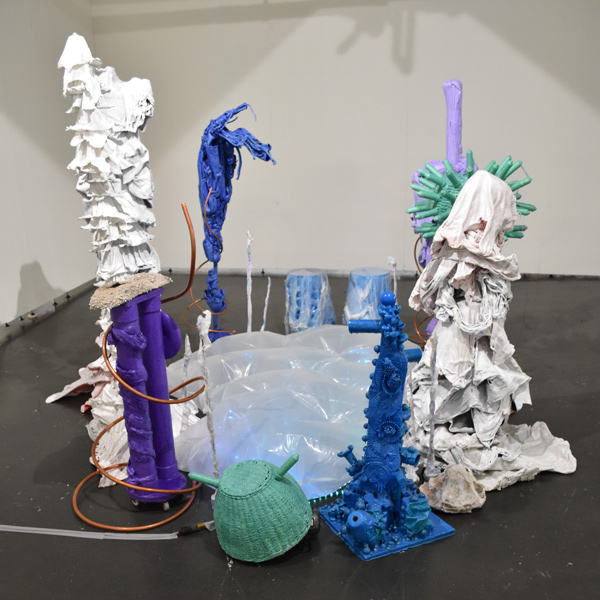
Anaeis Ohanian, Objekthood: Kuá Hakké Springs National Park, Mammoth Springs (2018).
Krauss’ concept of sculpture “made to become almost infinitely malleable” aptly describes the tremendous diversity of sculptural practice represented in Skulpturengarten despite preceding the works by approximately 40 years. By conjoining formal dynamics and an emphasis on direct expression—a strategy used in Post-Minimal sculpture—with a more literary approach to content typical of Post-Conceptual Art, the artists in this exhibition make a strong case that the medium of sculpture still contains room to maneuver.

